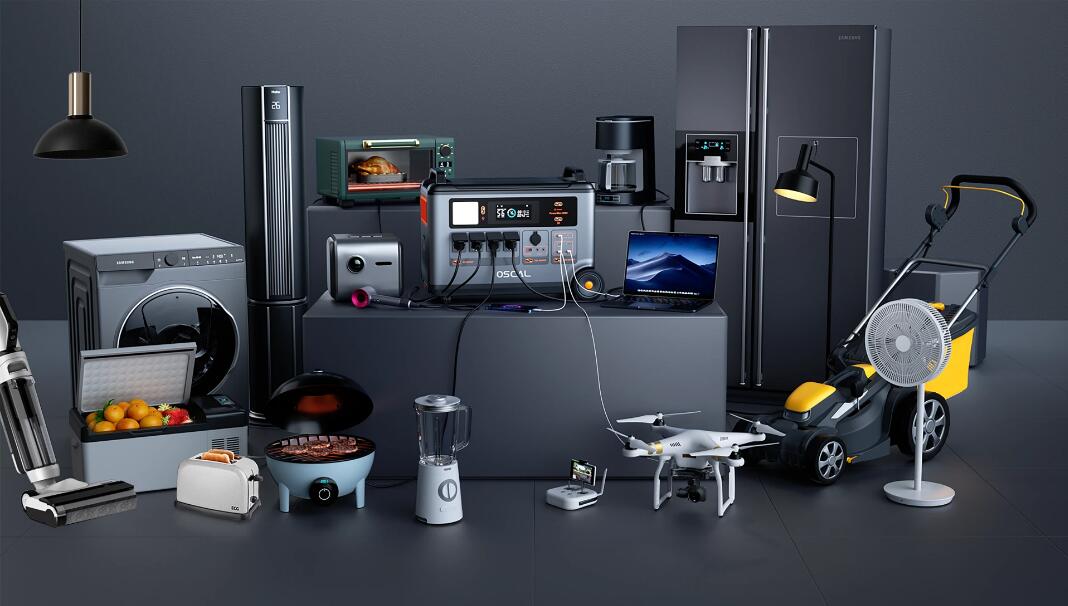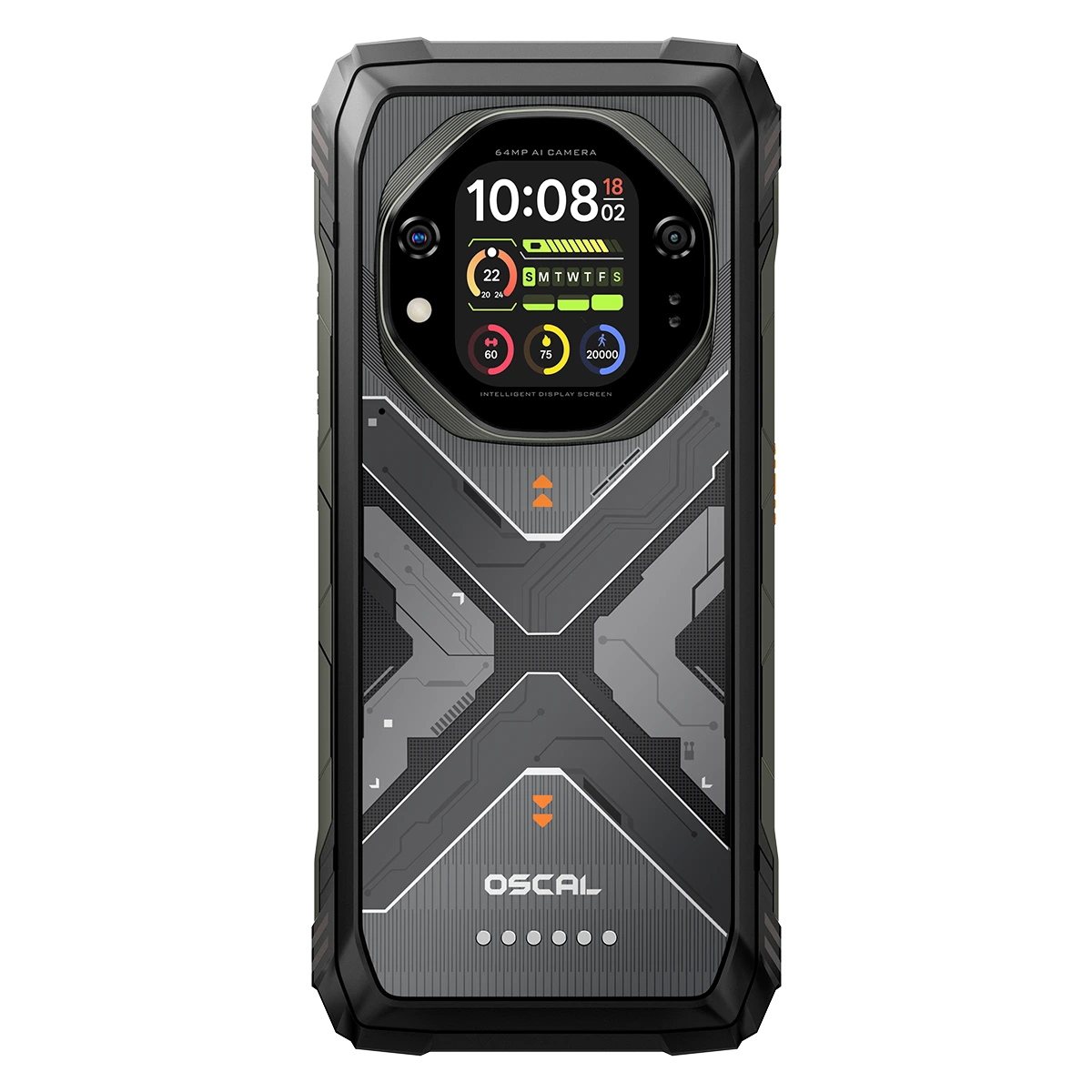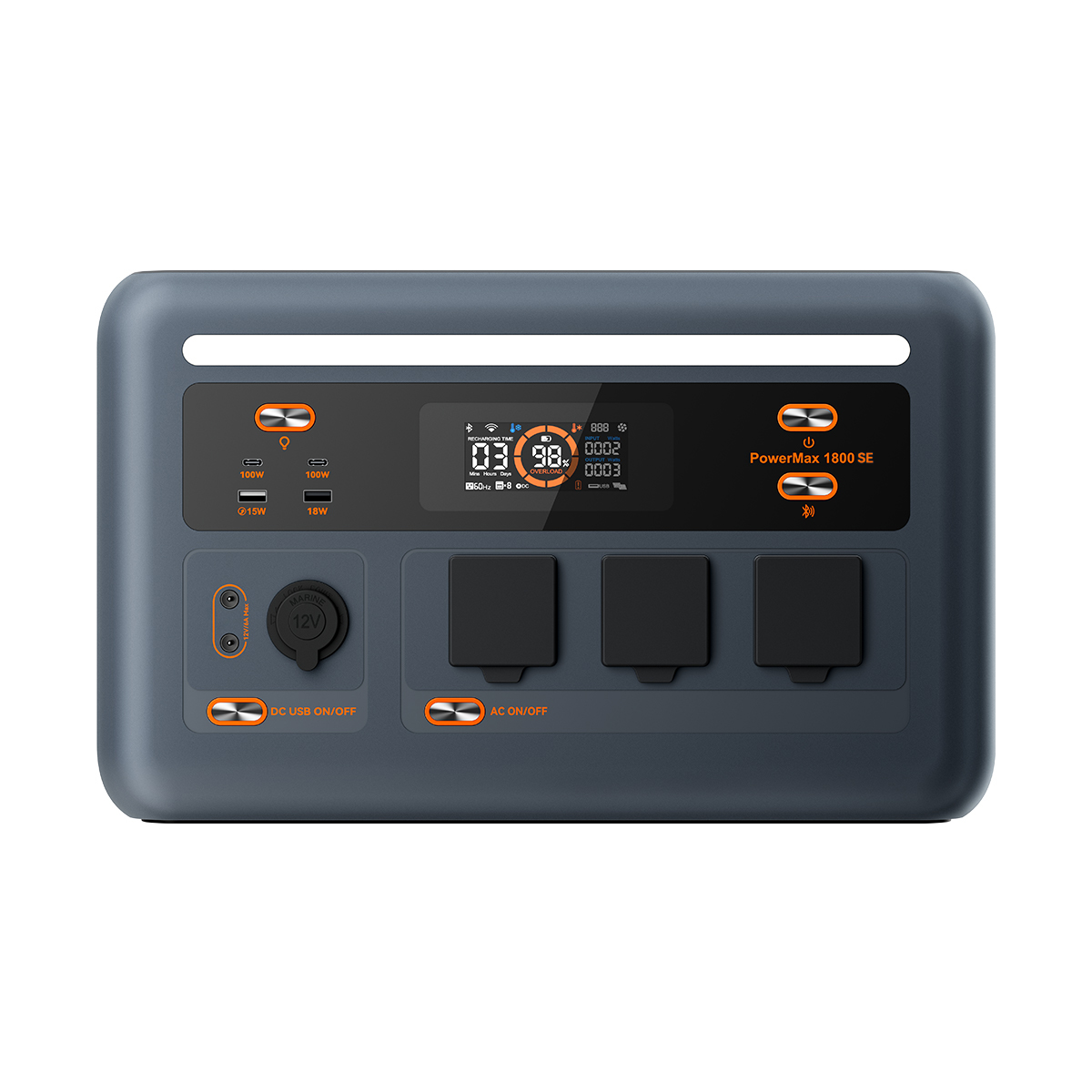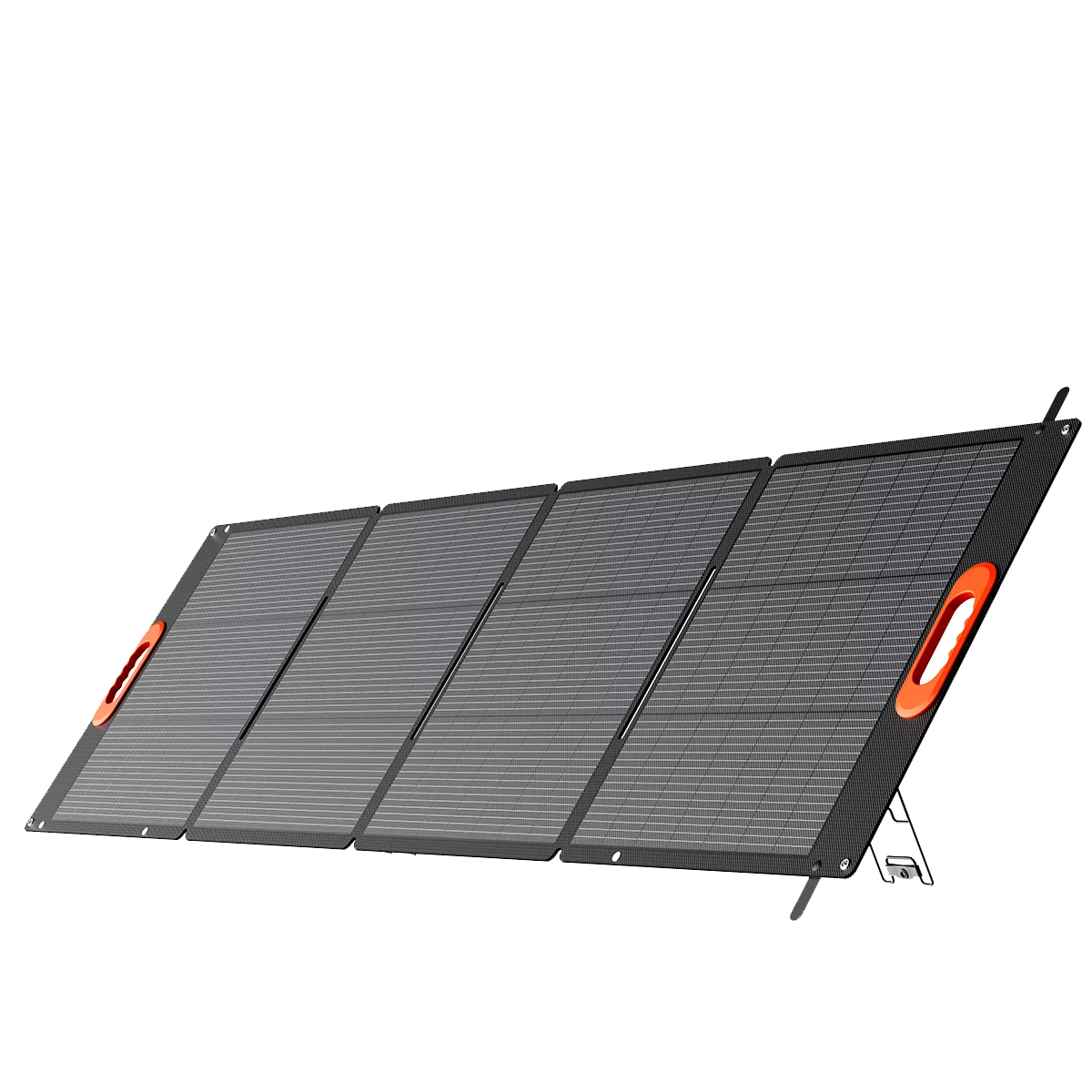Welcome to OSCAL (Well-known China brand of portable power stations, outdoor smartphones, and tablets) blog. Hope this guide has been helpful.
In today's fast-paced, technology-driven world, access to reliable power is no longer a luxury—it's a necessity. Whether you're camping in the wilderness, working remotely, or facing an unexpected blackout, having a dependable energy source can make all the difference. Portable power stations have emerged as a versatile solution, offering a clean, quiet, and efficient alternative to traditional fuel-powered generators.

Unlike bulky, noisy generators, portable power stations are compact, lightweight, and environmentally friendly. They store energy in high-capacity batteries and can power everything from smartphones to refrigerators. As renewable energy adoption grows, these devices are becoming essential for outdoor enthusiasts, emergency preparedness, and even everyday use.
The rise of portable power stations reflects a broader shift toward sustainable energy solutions. With advancements in lithium-ion battery technology and solar charging capabilities, these devices are more powerful and accessible than ever before. But what exactly are they, and how do they work?
This guide provides a comprehensive analysis of portable power stations, covering their functionality, key features, differences from traditional generators, common applications, top brands, maintenance tips, and future trends. By the end, you'll have a clear understanding of why these devices are revolutionizing portable power.
What is a Portable Power Station?
A portable power station is a rechargeable battery-powered generator designed to provide electricity on the go. It stores energy in lithium-ion or LiFePO4 (lithium iron phosphate) batteries and delivers it through multiple output ports, such as AC outlets, USB ports, and DC carports. These devices are ideal for powering electronics, appliances, and tools when grid power is unavailable.
Portable power stations vary in capacity, measured in watt-hours (Wh), which determines how long they can run devices. Smaller models (100-300Wh) can charge phones and laptops, while larger units (1000Wh+) can support refrigerators, medical equipment, or even small power tools. Many are also compatible with solar panels, enabling off-grid recharging.
Key advantages over traditional generators include:
- Silent operation – No noisy engines, making them ideal for campsites or indoor use.
- Zero emissions – No fumes or harmful pollutants, unlike gas generators.
- Portability – Lightweight and compact, often with carrying handles.
- Low maintenance – No fuel, oil changes, or complex upkeep required.
How Does a Portable Power Station Work?
Portable power stations function as large, rechargeable batteries with built-in power management systems. Here’s a breakdown of their operation:
1. Energy Storage
The station stores electricity in high-capacity lithium-based batteries. The energy can come from:
- Wall outlets (AC charging)
- Solar panels (DC input)
- Car chargers (12V DC input)
2. Power Conversion
An inverter converts stored DC power into AC power for household devices. Some models feature pure sine wave inverters, ensuring clean energy for sensitive electronics like laptops and medical equipment.
3. Output Delivery
Users can access power through multiple ports:
- AC outlets – For larger appliances (e.g., mini-fridges).
- USB ports – For phones, tablets, and small gadgets.
- DC ports – For car accessories or portable coolers.
4. Recharging
When depleted, the station can be recharged via:
- Grid power (fastest method)
- Solar panels (sustainable off-grid option)
- Car charging (useful during road trips)
Key Features of Portable Power Stations
When choosing a portable power station, consider these critical features:
Battery Capacity (Watt-Hours)
Determines how much energy the station can store. A 500Wh unit can power a 50W device for 10 hours (500Wh ÷ 50W = 10h).
Output Power (Watts)
Indicates the maximum wattage the station can deliver at once. High-wattage models (1000W+) can run microwaves or power tools.
Port Types & Quantity
Look for a mix of AC, USB-C, USB-A, and DC ports to accommodate various devices.
Solar Charging Compatibility
Essential for off-grid use. Some models support fast solar recharging with high-wattage panels.
Battery Chemistry
- Lithium-ion – Lightweight but shorter lifespan.
- LiFePO4 – Longer-lasting and more stable, but heavier.
Portable Power Station vs. Generator: What’s the Difference?
While both provide backup power, key differences include:
Power Source
Generators burn fuel (gas, propane, diesel), while power stations use rechargeable batteries.
Noise & Emissions
Generators are loud and emit fumes, whereas power stations operate silently and cleanly.
Maintenance
Generators require regular fuel refills and oil changes; power stations need minimal upkeep.
Portability
Power stations are lighter and easier to transport than most generators.
Use Cases
Generators excel in prolonged high-power scenarios (e.g., construction sites), while power stations are better for short-term, low-to-moderate power needs (e.g., camping, emergencies).

Common Uses of Portable Power Stations
These devices are incredibly versatile:
Outdoor Adventures
Powering lights, portable fridges, and cameras during camping or RV trips.
Emergency Backup
Keeping phones, medical devices, and essential appliances running during blackouts.
Remote Work
Charging laptops and Wi-Fi hotspots in off-grid locations.
Events & Tailgating
Running speakers, projectors, or mini-fridges at outdoor gatherings.
DIY & Construction
Providing temporary power for tools at job sites without grid access.
Top Brands in the Market
Leading portable power station manufacturers include:
Jackery
Pioneers in solar-compatible power stations, known for reliability and user-friendly designs.
OSCAL
An emerging brand that aims to provide reliability, versatility, and competitive pricing.
EcoFlow
Offers ultra-fast charging and high-capacity models like the Delta series.
Bluetti
Specializes in LiFePO4 batteries, emphasizing longevity and safety.
Goal Zero
A trusted name in off-grid power solutions, with rugged designs for outdoor use.
Anker
Focuses on compact, high-efficiency models ideal for travel and small devices.
Maintenance and Safety Tips
To maximize lifespan and safety:
Regular Charging
Keep the battery between 20%-80% for optimal health. Avoid full discharges.
Storage Conditions
Store in a cool, dry place. Extreme heat or cold can degrade battery performance.
Cleanliness
Wipe dust from ports and vents to prevent overheating.
Avoid Overloading
Check the total wattage of connected devices to prevent tripping the inverter.
Use Compatible Solar Panels
Ensure solar input voltage matches the station’s requirements.
Future Trends in Portable Power Stations
Innovations shaping the industry:
Faster Charging
New models support 80% charge in under an hour using advanced battery tech.
Modular Designs
Expandable batteries allow users to increase capacity as needed.
Smart Integration
Wi-Fi/Bluetooth connectivity for remote monitoring via smartphone apps.
Green Energy Focus
More brands are adopting sustainable materials and solar-first designs.
Vehicle-to-Load (V2L)
Future stations may integrate with electric cars for bidirectional charging.
Final Thoughts
Portable power stations represent a significant leap in energy accessibility, combining convenience, sustainability, and versatility. Whether you're an outdoor enthusiast, a remote worker, or simply preparing for emergencies, these devices offer a reliable power solution without the drawbacks of traditional generators.
As battery technology advances and renewable energy adoption grows, portable power stations will become even more efficient and affordable. Investing in a quality unit today ensures you’re prepared for tomorrow’s energy needs—wherever they arise.
From compact models for weekend getaways to high-capacity units for home backup, there’s a portable power station for every scenario. By understanding their features, benefits, and maintenance requirements, you can make an informed choice and harness the freedom of portable power.



































































 (1)-20251204034946188.jpg)



































































